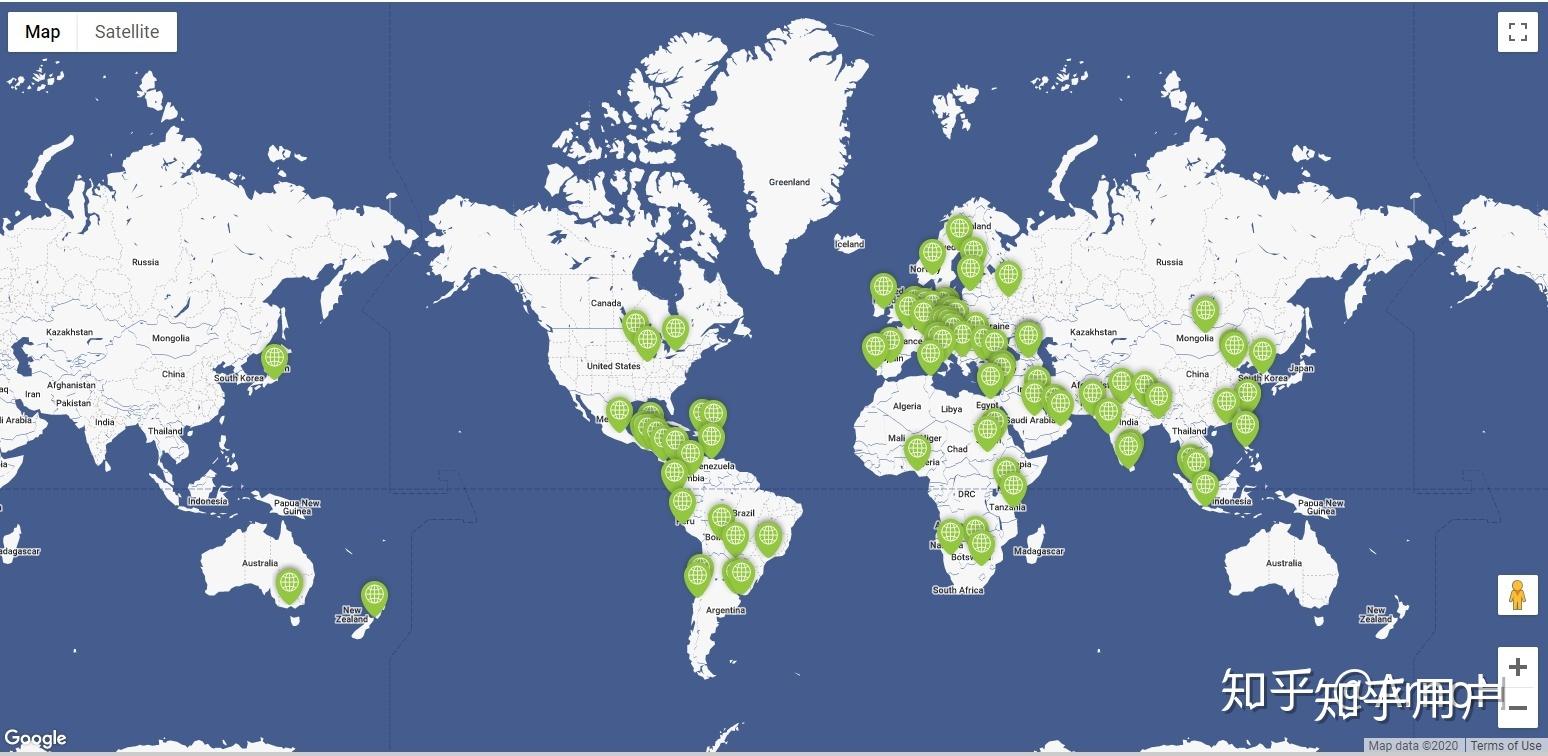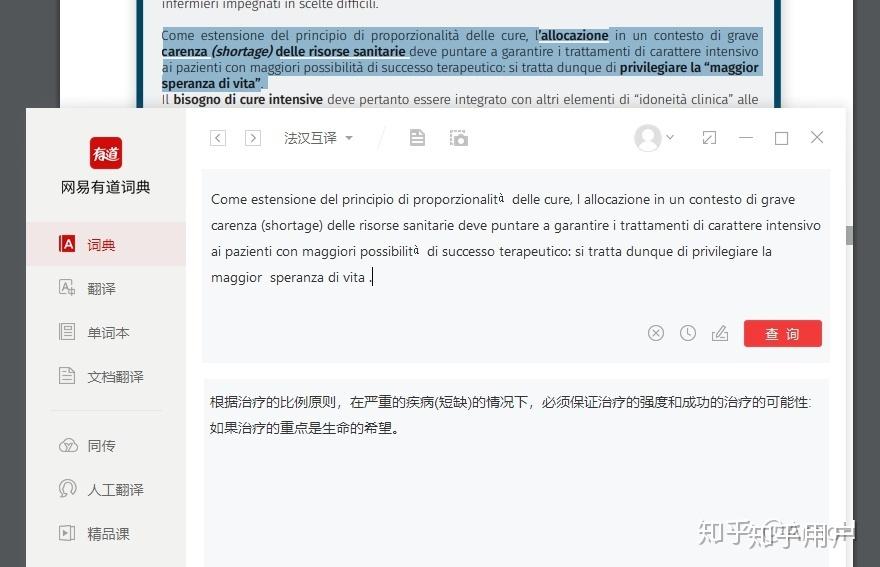 手机访问:wap.265xx.com
手机访问:wap.265xx.com如何看待意大利重症监护资源极度紧张,专业学会建议优先照顾年轻患者?
意大利麻醉镇痛重症医学学会在这份建议中说,随着历史的进步,医护人员在面临艰难选择时,发展出一系列的道德原则。
然而,在医疗资源严重短缺的情况下,资源分配必须确保为康复机会更大的患者提供强化治疗,因此要优先照顾“预期寿命最高”的患者。(扬子晚报)海外疫情观察|意大利重症监护资源极度紧张,专业学会建议优先照顾年轻患者


相关问题如何看待白岩松连线赴意大利抗疫专家说意大利医疗系统并没有像国内自媒体宣称的那样濒临崩溃?
大家都在讨论医疗挤兑下,选或者不选
其实还有一种选择,付出代价扩增当地医疗资源,缓解医疗挤兑。
然后请求感染程度较轻的国家国际援助。
付出代价,挽救国民。
但是意大利政府征招了老年退休医护(新冠高危人群)
未毕业学生(往往防护意识不够,太过善良和在临床上感情用事)
把应该保护的两个人群放在了前线。
我庆幸我们的国家,医学院校的老师,不仅没有把医学生放在这个位置,反而护在身后(不得返校,不得回临床)
发布该指南的协会为SIAATRI.
全球分布如下:

指南原文:http://www.siaarti.it/SiteAssets/News/COVID19%20-%20documenti%20SIAARTI/SIAARTI%20-%20Covid19%20-%20Raccomandazioni%20di%20etica%20clinica.pdf
指南译文:https://docs.google.com/document/d/1KS-AY8bWdEb_AyoN1_vU5CjB7Yk7wkhUPYGK4ilk30M/edit
该协会应该发的是类似于临床指南的东西,一般包括什么病,怎么治,遇到什么情况,采取什么措施。
题中描述为此文中一建议:

该建议实施条件为:“在需要与可用资源之间不平衡的特殊情况下,接受强化治疗和中止治疗的临床伦理建议”
则医疗资源严重挤兑情况下,该建议应能被实施。
强调:“先来先得的临床治疗,无异于不治。”
相信医务工作者可以感同身受,该抉择有多困难。
附录:
指南OneDrive版本
原文:知乎 - 安全中心
译文:CLINICAL ETHICS RECOMMENDATIONS
FOR ADMISSION TO INTENSIVE TREATMENTS
AND FOR THEIR SUSPENSION ,
IN EXCEPTIONAL CONDITIONS
OF IMBALANCE BETWEEN NEEDS
AND AVAILABLE RESOURCES
Version
Clinical ethics recommendations for admission to intensive treatments and for their suspension,
in exceptional conditions of imbalance between needs and available resources - version 01
Posted on 06.03.2020
Working group
Marco Vergano, Guido Bertolini,
Alberto Giannini, Giuseppe Gristina,
Sergio Livigni, Giovanni Mistraletti,
Flavia Petrini
Translated via Google Translate
Edits by Kashif Pirzada, MD Twitter @kashprime
Original Document: http://www.siaarti.it/SiteAssets/News/COVID19%20-%20documenti%20SIAARTI/SIAARTI%20-%20Covid19%20-%20Raccomandazioni%20di%20etica%20clinica.pdf
(本文手打翻译,非一字一句翻译,仅翻译部分英文译文。)
The predictions of the Coronavirus epidemic (Covid-19) currently underway in some Italian regions
they estimate an increase in cases of respiratory failure in the next few weeks in many centers
(根据许多意大利地区的预测,在接下来的几周内,各个医护中心将面临更多的呼吸衰竭患者)
acute (with the need for ICU admission) of such magnitude as to cause an enormous imbalance
between the real clinical needs of the population and the actual availability of intensive resources.
(这种临床实际需要远超过现有的重症监护资源)
It is a scenario where criteria for access to intensive care (and discharge) may be needed
(在这种情况下,可能需要一个标准帮助判断是否获得重症监护或者撤销重症监护)
not only strictly clinical appropriateness and proportionality of care, but also inspired
to a criterion as shared as possible of distributive justice and appropriate allocation of resources
limited healthcare.
(不仅考虑到了严格的临床适应症和护理比例,并且提倡尽可能公平、合适的共享有限的医疗资源)
A scenario of this kind can be substantially approximated to the field of "disaster medicine", for which ethical reflection has over time developed many concrete indications for doctors and nurses engaged in difficult choices.这种情况基本上可以近似于“灾难医学”领域,随着时间的流逝,伦理思考已为从事艰难选择的医生和护士提供了许多具体的适应症。
As an extension of the principle of proportionality of care, allocation in a serious shortage of health resources must aim at guaranteeing intensive treatments to patients with greater chances of therapeutic success: it is therefore a matter of privileging the "greatest life expectancy ".
作为护理比例原则的扩展,在严重缺乏卫生资源的情况下,分配必须旨在保证对有更大治疗成功机会的患者进行强化治疗:因此,这是赋予“最大寿命预期”的特权
The need for intensive care must therefore be integrated with other elements of "clinical suitability" to intensive care, thus including: the type and severity of the disease, the presence of comorbidities, the impairment of other organs and systems and their reversibility.
必须综合考虑:重症监护的需要和重症监护的临床适配性。重症监护的临床适配性包括:疾病的种类和严重程度,现有的合并症、其它器官和系统的功能,以及是否可逆。
This means not necessarily having to follow a criterion for access to intensive care like "first come, first served". It is understandable that the carers, by culture and training, are not accustomed to reasoning with criteria of emergency triage, as the current situation has exceptional characteristics.
The availability of resources does not usually enter the decision-making process and the choices of the individual case, until resources become so scarce as to not allow to treat all patients who they could hypothetically benefit from a specific clinical treatment.
It is implied that the application of rationing criteria is justifiable only after that by all the subjects involved (in particular the "Crisis Units" and the governing bodies of hospital facilities) all possible efforts have been made to increase the availability of resources available (in the in particular, Intensive Care beds) and after any possibility of transfer of the patients to centers with greater availability of resources.
It is important that a change in access policies should be shared as much as possible among the operators involved. Patients and their family members affected by the application of the criteria should be notified of the extraordinary nature of the measures in place, due to a question of duty of transparency and maintenance trust in the public health service.
The purpose of the recommendations is also that:
(A) to relieve clinicians from a part of responsibility in choices, which can be emotionally
burdensome, carried out in individual cases;
(B) to make the allocation criteria for healthcare resources explicit in a condition of their own
extraordinary scarcity.
4
From the information available now, a substantial part of subjects diagnosed with infection
from Covid-19 requires ventilatory support due to interstitial pneumonia characterized by
severe hypoxemia. Interstitial disease is potentially reversible, but the acute phase can last many
days.
Unlike more familiar ARDS cases, with the same hypoxemia, Covid-19 pneumonia appears
To have slightly better lung compliance and respond better to recruitments, medium PEEP
high, pronation cycles, inhaled nitric oxide. As for the most well-known paintings of habitual ARDS, these
patients require protective ventilation, with low driving pressure.
All this implies that the intensity of care can be high, as well as the use of human resources
From the data for the first two weeks in Italy, about one tenth of infected patients require a
intensive treatment with assisted ventilation, invasive or non-invasive.
Clinical ethics recommendations for admission
The Suspension of Intensive Care treatments in exceptional conditions where there is an imbalance between needs and available resources
5
Recommendations
1. Extraordinary admission and discharge criteria are flexible and can be adapted locally
the availability of resources, the real possibility of transferring patients, the number of accesses in progress or expected. The criteria apply to all intensive patients, not only to patients infected with Covid-19 infection.
2. Allocation is a complex choice, also due to the fact that an extraordinary excessive increase in
intensive beds would not guarantee adequate care for individual patients and would divert resources, attention and energies to the remaining patients admitted to Intensive Care. The increase is also to be considered predictable mortality from clinical conditions not related to the ongoing epidemic, due to the reduction elective surgical and outpatient activities and the scarcity of intensive resources.
3. It may be necessary to place an age limit on entry into ICU. It is not a question of making choices merely of value, but to reserve resources that could be very scarce for those who are primarily more likely to survive and secondarily to those who can have more years of life saved, with a view to maximizing of benefits for the most people. In a scenario of total saturation of intensive resources, deciding to keep a criterion of "First come, first served" would still be amounting to choosing not to treat any subsequent patients that would be excluded from Intensive Care.
4. The presence of comorbidities and functional status must be carefully evaluated, in addition to age. It is conceivable that a relatively short course in healthy people will potentially require a longer stay in ICU, and therefore more resource consuming on the health service. This would be worse in cases of elderly, frail or disabled patients with severe comorbidities. The specific and general clinical criteria present can be particularly useful for this purpose in the 2013 multi-company SIAARTI document on major end-stage organ failure (https://bit.ly/2Ifkphd). It is also appropriate to refer also to the SIAARTI document relating to the admission criteria in Intensive care (Minerva Anestesiol 2003; 69 (3): 101–118)
5. The possible presence of wishes previously expressed by the must be carefully considered
through any Advanced Directives and, in particular, how shared care planning should take place with family and carers.
6. For patients for whom access to an intensive course is deemed “inappropriate”, the decision by
however, setting a ceiling of care should be motivated, communicated and documented. The ceiling of care placed before mechanical ventilation must not preclude regular non-intensive care.
7. Any judgment of inappropriateness in accessing intensive care based solely on criteria
of distributive justice (extreme imbalance between demand and availability) will find justification in this
extraordinary situation.
8. In the decision-making process, if situations of particular difficulty and uncertainty arise, it can be
useful to have a "second opinion" (possibly even by phone) from interlocutors of
particular experience (for example, through a regional body or other health center).
9. The criteria for access to Intensive Care should be discussed and defined for each patient in the earliest most clearest way, ideally creating in time a list of patients who will be deemed candidates for Intensive Care when/if the patients deteriorate, provided that the availability at that moment allows for it. Any "do not intubate" instruction should be present in the medical record, ready to be used as a guide if clinical deterioration occurs precipitously and in the presence of caregivers who have not participated in the planning and who do not know the patient.
10. Palliative sedation in hypoxic patients with disease progression is considered necessary
as an expression of good clinical practice, and must follow existing recommendations. Transfer should occur to a non-intensive care environment.
11. All accesses to intensive care must however be considered as an "ICU trial" and subjected
therefore daily reassessment of appropriateness, care objectives and proportionality of cure. If it is considered that a patient, perhaps hospitalized with borderline criteria, does not respond to prolonged initial treatment or if the patients becomes more severely ill, transfer to palliative care -- in an influx scenario with an exceptionally high number of patients - should not be postponed.
12. The decision to cease care should be discussed and shared as much as possible collegially by the caring team and - as far as possible - in dialogue with the patient (and family members), but it must be
timely. It is foreseeable that the need to repeatedly make choices of this kind will render
each ICU more capable in the decision-making process and better adaptable to the availability of resources.
13. ECMO support, as it is resource consuming compared to an ordinary ICU hospitalization,
in conditions of extraordinary influx, it should be reserved for extremely selected cases and with
relatively rapid weaning pre-planned. It should ideally be reserved for hub centers at high volumes, for which the patient in ECMO absorbs proportionately fewer resources than there are would absorb in a center with less expertise.
14. It is important to "network" through the aggregation and exchange of information between centers and individuals professionals. When working conditions allow, at the end of the emergency, it will be
It is important to dedicate time and resources to moments of debriefing and monitoring of any burnout
professional and moral distress of providers.
15. Relapses on family members hospitalized in IC Covid-19, especially in cases in which the patient dies at the end of a total visit restriction period. (translators note: not sure what this line means) Original: Devono essere considerate anche le ricadute sui familiari ricoverati nelle TI Covid-19, soprattutto nei
casi in cui il paziente muoia al termine di un periodo di restrizione totale delle visite. Could mean: relax family visit restrictions when a patient dies in the visiting restriction period?
上一篇:碘盐、无碘盐、低钠盐……到底怎么选更健康?
下一篇:男人遗精是怎么回事
最近更新科技资讯
- 22年过去了,《透明人》依然是尺度最大的科幻电影,没有之一
- 人类基因编辑技术及其伦理问题
- 不吹不黑,五阿哥版的《嫌疑人》能过及格线
- 论Lacan心理公众号的“双标”特质
- 猎罪图鉴:犯罪实录 女性伦理
- 清入关的第一位皇帝是谁,清朝入关后有几位皇帝?
- 描写露台的优美句子
- 谭德晶:论迎春悲剧的叙事艺术
- 中秋节的好词好句
- 《三夫》:一女侍三夫,尺度最大的华语片要来了
- 赛博朋克的未来,在这里
- 文件1091/721/2A:反概念武器实体的一封信件
- 尤战生:哥伦比亚大学点点滴滴
- 韩国最具独特魅力的男演员(安在旭主演的电视剧有哪些)
- 乃至造句
- 请保护好我们的医生,他们太难了
- GCLL06-土木工程的伦理问题-以湖南凤凰县沱江大桥大坍塌事故为例
- 黄金宝典:九年级道德与法治核心考点必背篇
- 【我心中的孔子】伟大的孔子 思想的泰山
- CAMKII-δ9拮抗剂及其用途
- 选粹 | 郑玉双:法教义学如何应对科技挑战?——以自动驾驶汽车为例
- 苍井空37岁宛若少女,携子送祝福遭热讽,下架所有视频母爱无私
- 日韩新加坡怎么对待影视剧中的裸露镜头
- 中西方文化中的颜色词
- 土豪家的美女摸乳师——关于电影《美人邦》
